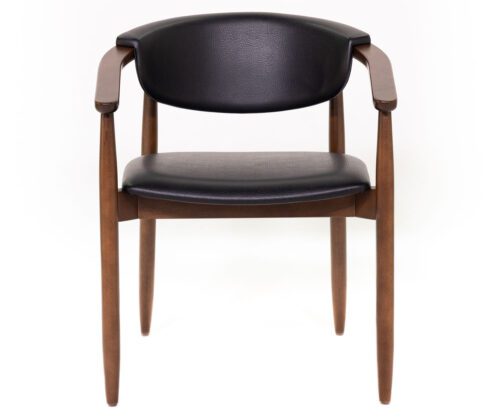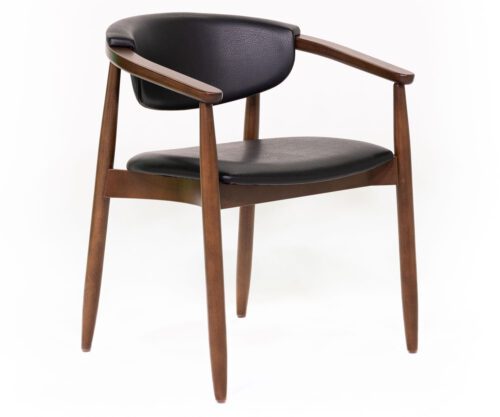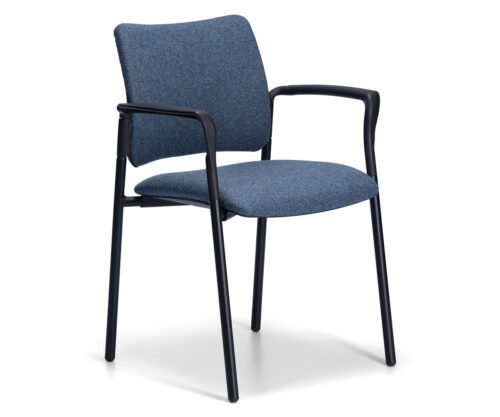Communal Connection: How to Craft Inviting Dining Spaces for Australian University Residential Colleges

Dining areas in Australian university residential colleges are more than just places to eat; they serve as the heart of communal living, fostering connections, and creating a sense of belonging.
In this blog post, we’ll explore the art of designing inviting dining spaces that go beyond mere functionality, enhancing the overall student experience in Australian universities.
Setting the Scene: The Importance of Inviting Dining Spaces
The university experience is a transformative period in a student’s life, marked by academic pursuits, personal growth, and the forging of lifelong connections. Amid the bustling schedules and academic rigors, the dining area within a residential college emerges as a pivotal space where the essence of communal living comes to life. Understanding the significance of creating inviting dining spaces goes beyond aesthetics – it encompasses the very fabric of student well-being and community dynamics.
- Beyond Mere Functionality: In the modern educational landscape, dining areas transcend their traditional role as places solely dedicated to meals. These spaces are dynamic hubs where students gather not just for sustenance but for social engagement, collaborative learning, and the cultivation of a shared identity within the residential college community.
- The Social Nexus: Inviting dining spaces serve as the social nexus of a residential college, fostering an environment conducive to meaningful connections. Whether students are engaged in lively conversations over meals, collaborating on group projects, or unwinding after a day of academic pursuits, the dining area becomes the canvas upon which the unique tapestry of college life is woven.
- Catalyst for Friendship: The act of breaking bread together holds a timeless significance, transcending cultural boundaries. Inviting dining spaces create an atmosphere where students can form connections and friendships that extend far beyond the dining table. Shared meals become rituals that strengthen the bonds of camaraderie, laying the foundation for a supportive and inclusive community.
- Cultural Exchange and Diversity: Within the inviting ambiance of a thoughtfully designed dining space, the cultural diversity of a residential college shines. Artful decor, strategically placed artifacts, and inclusive design elements contribute to an environment where students can celebrate their cultural backgrounds, fostering a sense of pride and appreciation for diversity.
- Rethinking Holistic Well-being: Recognizing the integral role of inviting dining spaces in the overall well-being of students, colleges are increasingly prioritizing holistic design. The atmosphere within these spaces contributes to a positive mental and emotional state, offering respite from the pressures of academic life and creating an environment that supports the holistic development of each student.
- Fostering a Sense of Home: For many students, especially those living away from their familial homes, the dining area becomes a symbolic hearth – a place that embodies a sense of home. Inviting dining spaces with comfortable furnishings, warm lighting, and a welcoming ambiance contribute to a comforting environment, reinforcing the idea that a residential college is not just a place to stay but a home away from home.
Designing for Connection: Key Elements of Inviting Dining Spaces
Creating inviting dining spaces in Australian university residential colleges involves a thoughtful blend of aesthetics, functionality, and an understanding of the social dynamics that unfold within these communal areas. Let’s delve into the key elements that contribute to the design of dining spaces, transforming them into vibrant hubs for connection and community building.
Comfortable and Versatile Furniture
- Ergonomic Seating: Choose seating that prioritizes comfort to encourage students to spend extended periods in the dining area. Consider upholstered chairs or benches with supportive backrests.
- Modular Solutions: Opt for furniture that can be easily rearranged to accommodate different group sizes or activities. Modular seating arrangements foster flexibility and adaptability within the space.
Warm and Welcoming Lighting
- Ambient Illumination: Create a warm and inviting atmosphere with carefully chosen lighting fixtures. Consider pendant lights or chandeliers that provide ambient illumination without being overly harsh.
- Task Lighting: Ensure that task areas, such as study nooks or communal tables, are well-lit to support activities beyond dining hours.
Cultural Diversity in Decor
- Inclusive Decor Elements: Infuse the space with decor elements that celebrate the diverse cultural backgrounds of the student population. Incorporate artwork, murals, or decorative items that represent various cultures, fostering a sense of inclusivity.
- Flexible Themes: Design the decor in a way that allows for easy updates or changes to accommodate different cultural events or celebrations throughout the academic year.
Community-Inspired Layouts
- Zoning: Create distinct zones within the dining area to cater to different needs. Consider designated areas for socializing, studying, and casual lounging.
- Intimate Nooks: Design smaller, intimate spaces within the larger dining area to provide privacy for smaller groups or individual reflection.
Customizing the Experience: Australian-Made Dining Furniture
In the quest to create truly inviting dining spaces within Australian university residential colleges, one of the most impactful considerations is the choice of furniture. By opting for Australian-made dining furniture and customizing the experience, residential colleges can infuse their dining areas with a unique identity that resonates with the ethos of the institution and the diverse community it serves.
Local Craftsmanship
- Artistry of Australian Craftsmen: Australian-made dining furniture embodies a commitment to quality and artistry. Local craftsmen bring a wealth of expertise and passion to their work, ensuring that each piece is not just a functional item but a work of craftsmanship.
- Sustainability: Supporting local artisans contributes to sustainability, as Australian manufacturers often prioritize eco-friendly practices and the use of responsibly sourced materials.
Supporting Local Artisans
- Community Engagement: Choosing Australian-made furniture fosters a sense of community engagement. It strengthens local economies and establishes partnerships with nearby businesses, creating a network of support within the region.
- Personal Connection: Residential colleges can establish a more personal connection with the artisans and manufacturers, facilitating communication and collaboration in creating furniture that aligns with the vision of the college.
Customizable Options
- Tailoring to College Identity: Australian manufacturers often provide customizable options, allowing residential colleges to tailor their dining furniture to align with the unique identity and values of the institution. This could include integrating college colours, logos, or motifs into the design.
- Adaptability: Customization extends beyond aesthetics; it includes adapting furniture to the specific needs of the dining space. Colleges can choose modular or adjustable pieces that suit various layouts and purposes within the communal area.
Bespoke Designs
- Distinctive College Aesthetics: Opting for bespoke designs enables residential colleges to express their distinctive aesthetics. Each piece becomes a reflection of the college’s personality, contributing to an environment that feels authentic and genuine.
- Branded Elements: Consider incorporating branded elements into the design, such as engraving or embossing the college name, mottos, or significant symbols onto the furniture. This creates a cohesive and visually impactful dining space.
Choosing Eco-Friendly Materials
- Sustainable Practices: Australian manufacturers often prioritize sustainability, using eco-friendly materials and manufacturing processes. Residential colleges can contribute to environmental conservation by selecting furniture that aligns with these principles.
- Longevity: Sustainable materials not only benefit the environment but also contribute to the longevity of the furniture, ensuring that it withstands the demands of student life for years to come.
The Social Impact: Inviting Dining Spaces and Student Well-being
Nurturing Mental Health
Inviting dining spaces within university residential colleges play a pivotal role in nurturing the mental health of students by offering more than just a place to eat. The ambiance and design of these spaces contribute to a calming and supportive atmosphere where students can unwind from the pressures of academic life. The importance of taking breaks and engaging in social activities, even as simple as sharing a meal, is well-documented in promoting positive mental health outcomes. These spaces become retreats, providing students with moments of respite, social connection, and the opportunity to recharge. The positive impact of a well-designed dining environment on mental health extends to reducing stress, fostering relaxation, and creating a sense of balance amidst the rigorous demands of university life.
Fostering Inclusivity
Inviting dining spaces serve as inclusive hubs that embrace the diversity of the university community. Thoughtful design elements and cultural considerations contribute to an environment where students from various backgrounds feel welcome and valued. These spaces become platforms for cultural exchanges, breaking down barriers and promoting a sense of shared identity among residents. Inclusivity is not only about physical access but also about creating an atmosphere that encourages open communication and mutual understanding. By celebrating diverse traditions, cuisines, and customs within the dining spaces, universities foster a culture of acceptance and appreciation. This inclusivity contributes to the well-being of students by reinforcing a sense of belonging, promoting positive relationships, and enriching the overall college experience with a tapestry of varied perspectives.
Building Bridges through Inviting Dining Spaces
As residential colleges strive to create holistic and enriching environments for students, the design of dining spaces becomes a powerful tool for fostering communal connection. By investing in Australian-made, customizable furniture and thoughtfully designing these spaces, universities can elevate the student experience and nurture a sense of belonging that lasts a lifetime. Join us on this journey of crafting inviting dining spaces that truly become the heart of the residential college community.
Student Accommodation Furniture
Our Australian-made student accommodation furniture is made right here in our Brisbane furniture manufacturing facility.
More News
Communal Connection: How to Craft Inviting Dining Spaces for Australian University Residential Colleges

Dining areas in Australian university residential colleges are more than just places to eat; they serve as the heart of communal living, fostering connections, and creating a sense of belonging.
In this blog post, we’ll explore the art of designing inviting dining spaces that go beyond mere functionality, enhancing the overall student experience in Australian universities.
Setting the Scene: The Importance of Inviting Dining Spaces
The university experience is a transformative period in a student’s life, marked by academic pursuits, personal growth, and the forging of lifelong connections. Amid the bustling schedules and academic rigors, the dining area within a residential college emerges as a pivotal space where the essence of communal living comes to life. Understanding the significance of creating inviting dining spaces goes beyond aesthetics – it encompasses the very fabric of student well-being and community dynamics.
- Beyond Mere Functionality: In the modern educational landscape, dining areas transcend their traditional role as places solely dedicated to meals. These spaces are dynamic hubs where students gather not just for sustenance but for social engagement, collaborative learning, and the cultivation of a shared identity within the residential college community.
- The Social Nexus: Inviting dining spaces serve as the social nexus of a residential college, fostering an environment conducive to meaningful connections. Whether students are engaged in lively conversations over meals, collaborating on group projects, or unwinding after a day of academic pursuits, the dining area becomes the canvas upon which the unique tapestry of college life is woven.
- Catalyst for Friendship: The act of breaking bread together holds a timeless significance, transcending cultural boundaries. Inviting dining spaces create an atmosphere where students can form connections and friendships that extend far beyond the dining table. Shared meals become rituals that strengthen the bonds of camaraderie, laying the foundation for a supportive and inclusive community.
- Cultural Exchange and Diversity: Within the inviting ambiance of a thoughtfully designed dining space, the cultural diversity of a residential college shines. Artful decor, strategically placed artifacts, and inclusive design elements contribute to an environment where students can celebrate their cultural backgrounds, fostering a sense of pride and appreciation for diversity.
- Rethinking Holistic Well-being: Recognizing the integral role of inviting dining spaces in the overall well-being of students, colleges are increasingly prioritizing holistic design. The atmosphere within these spaces contributes to a positive mental and emotional state, offering respite from the pressures of academic life and creating an environment that supports the holistic development of each student.
- Fostering a Sense of Home: For many students, especially those living away from their familial homes, the dining area becomes a symbolic hearth – a place that embodies a sense of home. Inviting dining spaces with comfortable furnishings, warm lighting, and a welcoming ambiance contribute to a comforting environment, reinforcing the idea that a residential college is not just a place to stay but a home away from home.
Designing for Connection: Key Elements of Inviting Dining Spaces
Creating inviting dining spaces in Australian university residential colleges involves a thoughtful blend of aesthetics, functionality, and an understanding of the social dynamics that unfold within these communal areas. Let’s delve into the key elements that contribute to the design of dining spaces, transforming them into vibrant hubs for connection and community building.
Comfortable and Versatile Furniture
- Ergonomic Seating: Choose seating that prioritizes comfort to encourage students to spend extended periods in the dining area. Consider upholstered chairs or benches with supportive backrests.
- Modular Solutions: Opt for furniture that can be easily rearranged to accommodate different group sizes or activities. Modular seating arrangements foster flexibility and adaptability within the space.
Warm and Welcoming Lighting
- Ambient Illumination: Create a warm and inviting atmosphere with carefully chosen lighting fixtures. Consider pendant lights or chandeliers that provide ambient illumination without being overly harsh.
- Task Lighting: Ensure that task areas, such as study nooks or communal tables, are well-lit to support activities beyond dining hours.
Cultural Diversity in Decor
- Inclusive Decor Elements: Infuse the space with decor elements that celebrate the diverse cultural backgrounds of the student population. Incorporate artwork, murals, or decorative items that represent various cultures, fostering a sense of inclusivity.
- Flexible Themes: Design the decor in a way that allows for easy updates or changes to accommodate different cultural events or celebrations throughout the academic year.
Community-Inspired Layouts
- Zoning: Create distinct zones within the dining area to cater to different needs. Consider designated areas for socializing, studying, and casual lounging.
- Intimate Nooks: Design smaller, intimate spaces within the larger dining area to provide privacy for smaller groups or individual reflection.
Customizing the Experience: Australian-Made Dining Furniture
In the quest to create truly inviting dining spaces within Australian university residential colleges, one of the most impactful considerations is the choice of furniture. By opting for Australian-made dining furniture and customizing the experience, residential colleges can infuse their dining areas with a unique identity that resonates with the ethos of the institution and the diverse community it serves.
Local Craftsmanship
- Artistry of Australian Craftsmen: Australian-made dining furniture embodies a commitment to quality and artistry. Local craftsmen bring a wealth of expertise and passion to their work, ensuring that each piece is not just a functional item but a work of craftsmanship.
- Sustainability: Supporting local artisans contributes to sustainability, as Australian manufacturers often prioritize eco-friendly practices and the use of responsibly sourced materials.
Supporting Local Artisans
- Community Engagement: Choosing Australian-made furniture fosters a sense of community engagement. It strengthens local economies and establishes partnerships with nearby businesses, creating a network of support within the region.
- Personal Connection: Residential colleges can establish a more personal connection with the artisans and manufacturers, facilitating communication and collaboration in creating furniture that aligns with the vision of the college.
Customizable Options
- Tailoring to College Identity: Australian manufacturers often provide customizable options, allowing residential colleges to tailor their dining furniture to align with the unique identity and values of the institution. This could include integrating college colours, logos, or motifs into the design.
- Adaptability: Customization extends beyond aesthetics; it includes adapting furniture to the specific needs of the dining space. Colleges can choose modular or adjustable pieces that suit various layouts and purposes within the communal area.
Bespoke Designs
- Distinctive College Aesthetics: Opting for bespoke designs enables residential colleges to express their distinctive aesthetics. Each piece becomes a reflection of the college’s personality, contributing to an environment that feels authentic and genuine.
- Branded Elements: Consider incorporating branded elements into the design, such as engraving or embossing the college name, mottos, or significant symbols onto the furniture. This creates a cohesive and visually impactful dining space.
Choosing Eco-Friendly Materials
- Sustainable Practices: Australian manufacturers often prioritize sustainability, using eco-friendly materials and manufacturing processes. Residential colleges can contribute to environmental conservation by selecting furniture that aligns with these principles.
- Longevity: Sustainable materials not only benefit the environment but also contribute to the longevity of the furniture, ensuring that it withstands the demands of student life for years to come.
The Social Impact: Inviting Dining Spaces and Student Well-being
Nurturing Mental Health
Inviting dining spaces within university residential colleges play a pivotal role in nurturing the mental health of students by offering more than just a place to eat. The ambiance and design of these spaces contribute to a calming and supportive atmosphere where students can unwind from the pressures of academic life. The importance of taking breaks and engaging in social activities, even as simple as sharing a meal, is well-documented in promoting positive mental health outcomes. These spaces become retreats, providing students with moments of respite, social connection, and the opportunity to recharge. The positive impact of a well-designed dining environment on mental health extends to reducing stress, fostering relaxation, and creating a sense of balance amidst the rigorous demands of university life.
Fostering Inclusivity
Inviting dining spaces serve as inclusive hubs that embrace the diversity of the university community. Thoughtful design elements and cultural considerations contribute to an environment where students from various backgrounds feel welcome and valued. These spaces become platforms for cultural exchanges, breaking down barriers and promoting a sense of shared identity among residents. Inclusivity is not only about physical access but also about creating an atmosphere that encourages open communication and mutual understanding. By celebrating diverse traditions, cuisines, and customs within the dining spaces, universities foster a culture of acceptance and appreciation. This inclusivity contributes to the well-being of students by reinforcing a sense of belonging, promoting positive relationships, and enriching the overall college experience with a tapestry of varied perspectives.
Building Bridges through Inviting Dining Spaces
As residential colleges strive to create holistic and enriching environments for students, the design of dining spaces becomes a powerful tool for fostering communal connection. By investing in Australian-made, customizable furniture and thoughtfully designing these spaces, universities can elevate the student experience and nurture a sense of belonging that lasts a lifetime. Join us on this journey of crafting inviting dining spaces that truly become the heart of the residential college community.
Student Accommodation Furniture
Our Australian-made student accommodation furniture is made right here in our Brisbane furniture manufacturing facility.
Commercial furniture by room
Based in Brisbane, we’re an Australian manufacturer of aged care furniture, retirement living furniture, hospital & healthcare furniture, hotel & accommodation furniture and student accommodation furniture. We also supply a range of commercial office furniture.
Discover the FHG Look Book: Your Source of Inspiration for Quality Australian-Made Commercial Furniture
- Quality Craftsmanship: See why we’ve been a trusted partner for over 25 years.
- Local Excellence: Learn how our Brisbane team ensures the highest standards.
- Inspiration and Ideas: Find innovative furniture solutions for any environment.
Don’t miss the opportunity to transform your commercial space with FHG’s expertly crafted furniture. Download the FHG Look Book today and start your journey towards exceptional design and quality.
























